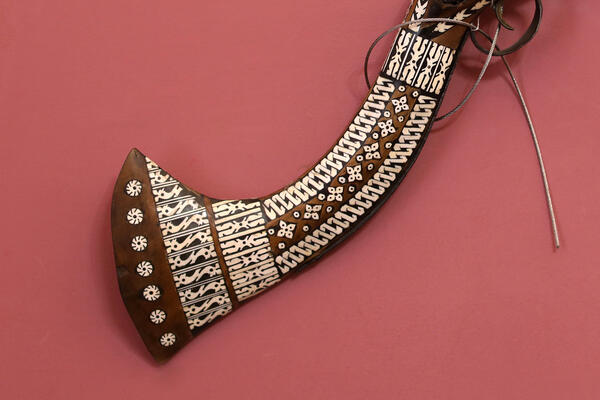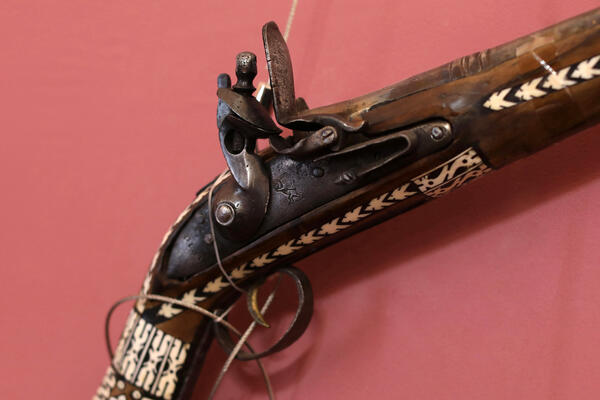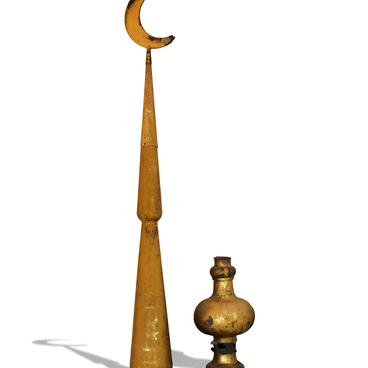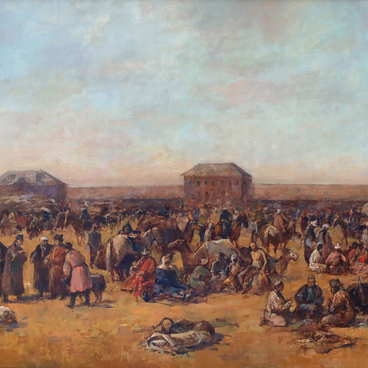The jezail or jezzail is a traditional long-barreled, muzzle-loading gun that was popular among certain Central Asian peoples, especially in Afghanistan.
The jezail was a handcrafted weapon. Such guns could have various design and decorative features. The long barrel set it apart from European muskets. It also had a large caliber typically exceeding 12 millimeters.
Jezails usually weighed around six to seven kilograms, compared to four to five kilograms for a typical musket. As a result, the jezail had less recoil.
Many jezails were smoothbore weapons, but some had their barrels rifled. The rifling, combined with the barrel’s length, made these weapons very accurate for their time.
The firing mechanism was typically either a matchlock or a flintlock. Since flintlock mechanisms were complex and difficult to manufacture, many jezails used the lock mechanism from captured British muskets.
The stocks were handmade and had a distinctive curve. The function of this curve is debated. It may be purely decorative, or it may have allowed the jezail to be tucked under the arm and cradled tightly against the body during carrying or shooting.
During the First Anglo-Afghan War, the jezails were the main long-range weapon of Afghan soldiers. They had a better range than British muskets and were especially effective during ambushes and shelling from high ground. However, in open areas, they did not provide a decisive advantage. The First Anglo-Afghan War ended in the defeat of the British Empire, with 18,000 British soldiers and officers killed.
In the Second Anglo-Afghan War in 1878, both British and Afghan forces used more advanced rifles, but the jezails also continued to be used.
The Second Anglo-Afghan War and the Afghan jezail
are mentioned by the English writer Arthur Conan Doyle. In particular, Dr.
Watson, the companion of the detective Sherlock Holmes, was wounded during the
Battle of Maiwand, a battle that took place in 1880 and resulted in the defeat
of British troops. Dr. Watson described the battle as follows,




